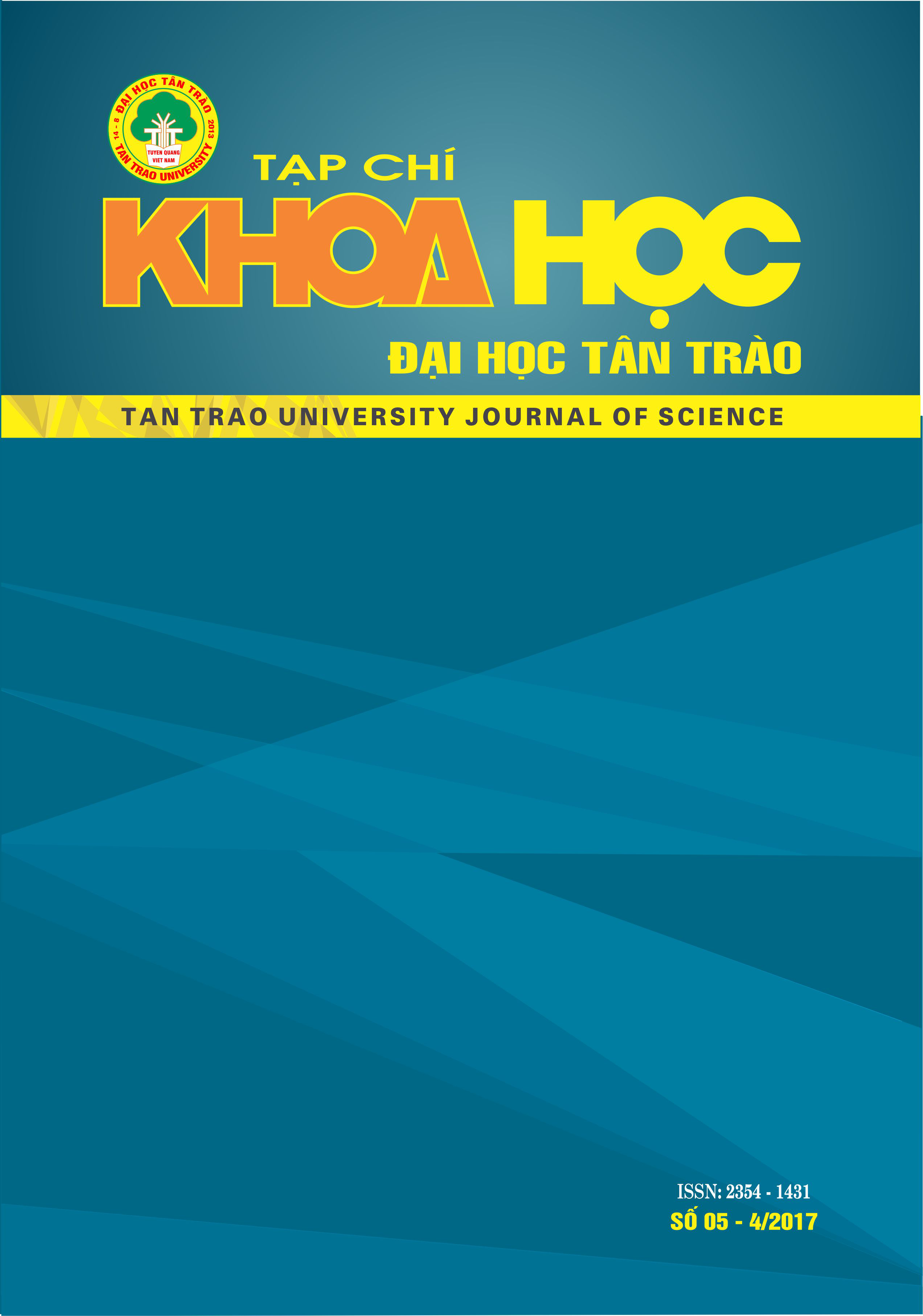MỘT VÀI ĐẶC ĐIỂM VỀ NGÔN NGỮ TRONG NÔM ĐƯỜNG LUẬT PHAN BỘI CHÂU THỜI KỲ Ở HUẾ
DOI:
https://doi.org/10.51453/2354-1431/2017/139Từ khóa:
Äặc Ä‘iểm ngôn ngữ ThÆ¡ ÄÆ°á»ng luáºt; ThÆ¡ ÄÆ°á»ng luáºt Phan Bá»™i Châu; Phan Bá»™i Châu thá»i kỳ ở HuếTóm tắt
Văn học Việt Nam nửa đầu thế kỉ XX được xem là giai đoạn “giao thời”, với sự đấu tranh giữa thơ Cũ và thơ Mới, giữa truyền thống và cách tân, tồn tại nhiều khuynh hướng, dòng phái khác nhau. Từ góc độ thể loại, không ít người cho đây là thời điểm thơ tự do thắng thế, thơ Đường luật nói chung bị xem là hết mùa, lỗi thời. Song vẫn còn đó một minh chứng hùng hồn cho sự hiện diện của thơ Nôm Đường luật Việt Nam ở nửa đầu thế kỉ XX, đó là Nôm Đường luật Phan Bội Châu. Bài viết trên cơ sở chỉ ra một vài đặc điểm về ngôn ngữ trong thơ Nôm Đường luật Phan Bội Châu thời kỳ ở Huế, từ đó cho thấy những đổi mới, cách tân của Phan Sào Nam trong việc sử dụng thể thơ truyền thống của dân tộc.
Tải xuống
Tài liệu tham khảo
1. Phan Bội Châu, “Quan niệm của tôi đối với văn chương”, báo Đông Phương ngày 28 -10-1931;
2. Chu Trọng Huyến (1998), Truyện Phan Bội Châu, Nxb Nghệ An;
3. Nguyễn Ái Quốc (1925), Những trò lố hay là Varen và Phan Bội Châu;
4. Chương Thâu – Trần Ngọc Vương (2006), Phan Bội Châu về tác gia và tác phẩm, Nxb Giáo dục;
5. Nguyễn Hữu Trí, Thơ văn Phan Bội Châu thời kỳ ở Huế, Luận án PTS Khoa học Ngữ văn;
6. Trần Thị Lệ Thanh (2012), Đặc điểm thơ Đường luật Việt Nam nửa đầu thế kỷ XX, Nxb Đại học Thái Nguyên;
7. Trần Anh Vinh, Chương Thâu (1987), Thơ văn Phan Bội Châu thời kì ở Huế (1926 – 1940), Nxb Thuận Hóa, Huế.
Tải xuống
Đã Xuất bản
Cách trích dẫn
Số
Chuyên mục
Giấy phép

Tác phẩm này được cấp phép theo Giấy phép Quốc tế Creative Commons Attribution-ShareAlike 4.0 .
Bài báo được xuất bản ở Tạp chí Khoa học Đại học Tân Trào được cấp phép theo giấy phép Ghi công - Chia sẻ tương tự 4.0 Quốc tế (CC BY-SA). Theo đó, các tác giả khác có thể sao chép, chuyển đổi hay phân phối lại các bài báo này với mục đích hợp pháp trên mọi phương tiện, với điều kiện họ trích dẫn tác giả, Tạp chí Khoa học Đại học Tân Trào và đường link đến bản quyền; nêu rõ các thay đổi đã thực hiện và các nghiên cứu đăng lại được tiến hành theo cùng một bản quyền.
Bản quyền bài báo thuộc về các tác giả, không hạn chế số lượng. Tạp chí Khoa học Tân Trào được cấp giấy phép không độc quyền để xuất bản bài báo với tư cách nhà xuất bản nguồn, kèm theo quyền thương mại để in các bài báo cung cấp cho các thư viện và cá nhân.
Mặc dù các điều khoản của giấy phép CC BY-SA không dành cho các tác giả (với tư cách là người giữ bản quyền của bài báo, họ không bị hạn chế về quyền hạn), khi gửi bài tới Tạp chí Khoa học Đại học Tân Trào, tác giả cần đáp ứng quyền của độc giả, và cần cấp quyền cho bên thứ 3 sử dụng bài báo của họ trong phạm vi của giấy phép.






